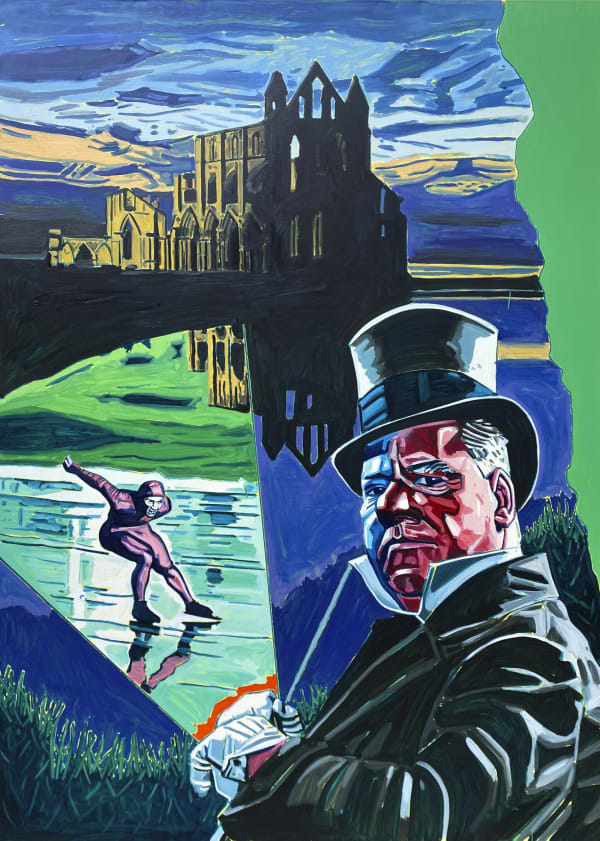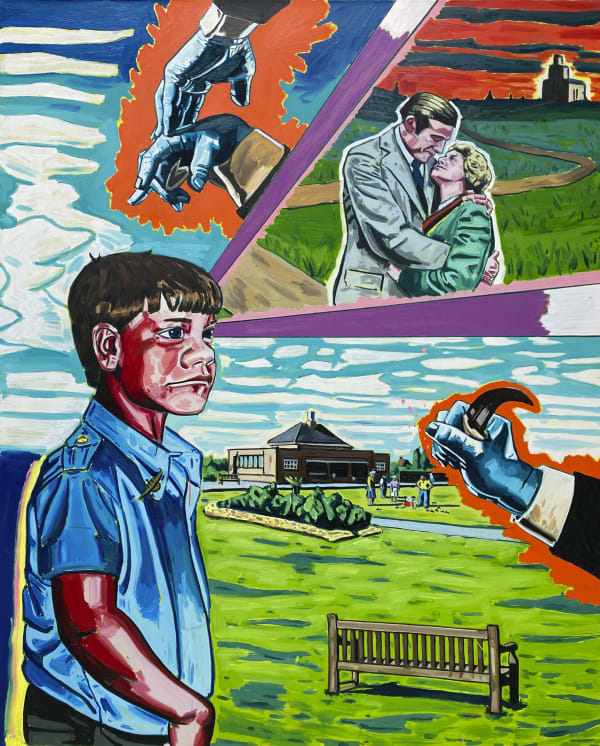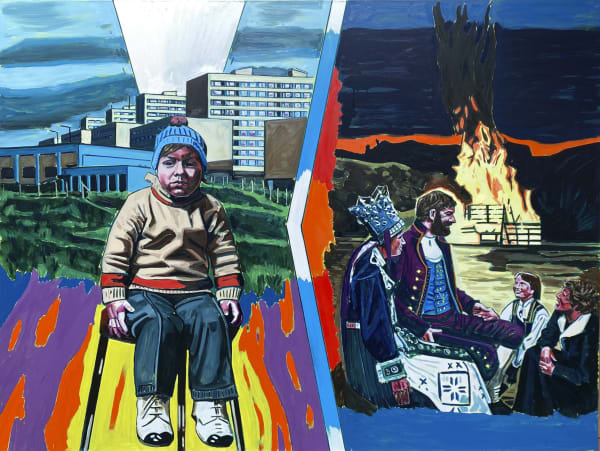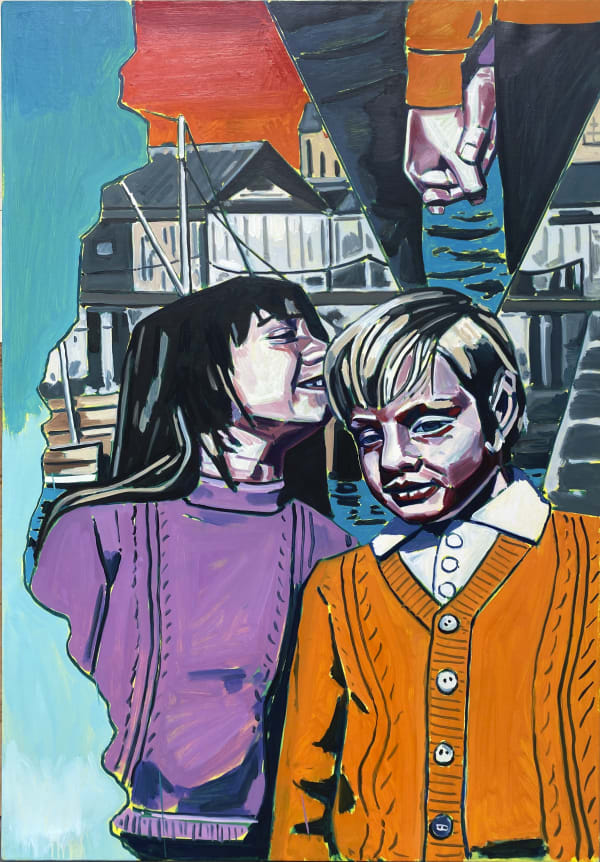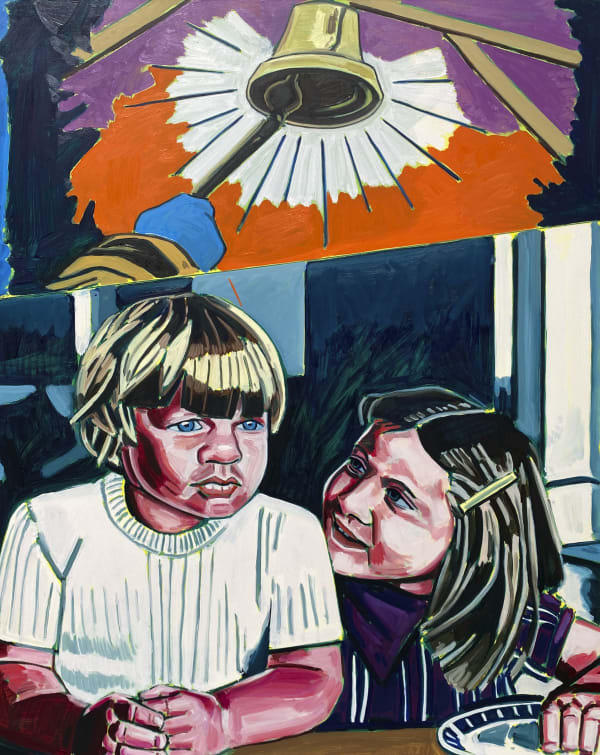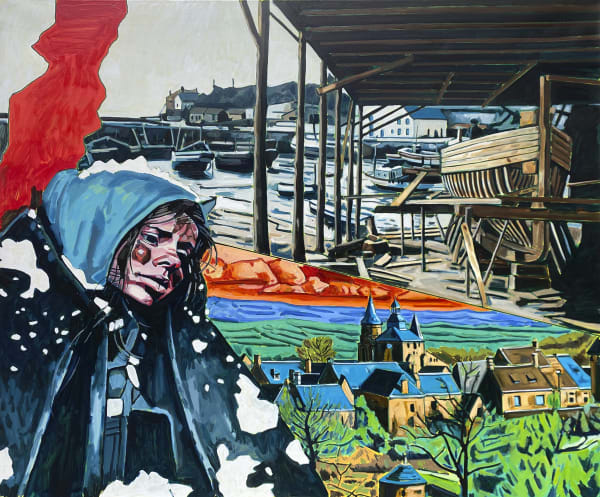-
Ariel
Louis Bennett -

-
-
Solo exhibitions include Ariel (Upcoming), Kristin Hjellegjerde Gallery, London (2021); Tears Like Northern Rain, Kristin Hjellegjerde Gallery, London (2020), Bloomsbury Festival Art Prize, Senate House Library, London (2019) and Louis Bennett: Three Paintings, The Storey Gallery, Lancaster (2017).
Group exhibitions include Graduate Showcase, Saatchi Gallery, London (2020), RCA/Slade Graduation Show, Kristin Hjellegjerde Gallery, London (2020), Offshoot Winter Salon, Offshoot Gallery, London (2019-20), Engendering Men’s Health (With Grayson Perry), UCL, London (2019), Cartoons and Cereal,Offshoot Gallery, London (2019), Pulling Teeth, ASC Gallery, London (2019), Bloomberg New Contemporaries 2018, Liverpool Biennial/South London Gallery (2018), Steady State? (two person show), King St Studios, Lancaster (2018), RSA New Contemporaries 2018,Royal Scottish Academy, (2018), Best of Degree Show, Six Foot Gallery, Glasgow (2017), Best of Scottish Degree Shows,Resonate Arts House, Alloa (2017), Art<100,King St Studios, Lancaster (2017), Serving Suggestion, The Glue Factory, Glasgow (2016), 2 Years Licked, The Grace and Clarke Fyfe Gallery, The Glasgow School of Art, (2015).
-
Highlights and Collections
In 2019, Bennet was awarded the Bloomsbury Festival art prize as well as the Slade Print Fair Scholarship. In 2018 he also received Stevenston Award for a Painter of Merit, RSA New Contemporaries.
-
-

-
-
 Lulu Bennett, Approach Me, My Ariel, 2021
Lulu Bennett, Approach Me, My Ariel, 2021 -
 Lulu Bennett, Can't Stop Thinking About It, 2021
Lulu Bennett, Can't Stop Thinking About It, 2021 -
 Lulu Bennett, From The Hearth, 2021
Lulu Bennett, From The Hearth, 2021 -
 Lulu Bennett, Here She Comes!, 2021
Lulu Bennett, Here She Comes!, 2021
-
 Lulu Bennett, It Was Written, 2021
Lulu Bennett, It Was Written, 2021 -
 Lulu Bennett, Komm, Gib Micht Deine Hand, 2021
Lulu Bennett, Komm, Gib Micht Deine Hand, 2021 -
 Lulu Bennett, Love Arrives With Spring, 2021
Lulu Bennett, Love Arrives With Spring, 2021 -
 Lulu Bennett, O! Solitude! (After Purcell), 2021
Lulu Bennett, O! Solitude! (After Purcell), 2021
-
-
-
Bennett’s process typically begins with the collection of found imagery and ephemeral materials which provide visual or atmospheric inspiration. For this latest exhibition, the artist cites The Tempest as a key influence. Some of the paintings allude to the play’s desolate maritime setting while others make a direct reference to the character of Ariel who, in Shakespeare’s narrative, is a magical spirit, but the name holds deeper significance for the artist as it is also the name of his partner, and a homophone of the word ‘aerial’. ‘The feeling of being airborne, floating above the ground, is how this time has felt, for me, meeting someone who feels otherworldly in a historical moment where we all feel completely untethered from any sense of normality and stability,’ he explains. ‘One of the parts of The Tempest that really touched me is the idea of Prospero being a character in exile, longing for a lost home, seeking to have former glory restored to him. In deepest lockdown isolation, I felt like this, before my own Ariel arrived to save me from this feeling.’
Bennett also found himself drawn to the aesthetic of old French magazines, and specifically, the stylised fashion shoots of children posed in surreal scenarios that envision romantic cliches. While the artist’s previous paintings typically focused on the suffering of the older generations who were rendered in bleached, ghoulish hues, many of these latest works depict children with round, reddened cheeks, dressed in dated clothing that further emphasises the notion of nostalgia and innocence. In the painting entitled Komm, Gib Mir Deine Hand (which references the German version of the Beatles song ‘I want to hold your hand’ ), for example, a young girl is whispering something into a boy’s ear against the backdrop of a harbour at sunset.While the painting is cropped at waist height, an image exploding out of the boy's head shows us not only that they’re holding hands, but also that this moment of intimate physical connection is the overriding focus of his attention.
This technique of splicing images recalls the graphic style of comic books and Pop art, but for Bennett, it’s also a way of visualising the character’s mental state, and the familiar experience of being in one place while your mind is in another. The painting Can’t Stop Thinking About It envisions another young boy but this time he’s very clearly consumed by his thoughts. He is standing in a verdant green park, but gazing off to the side of the canvas, mentally seeing an image of a man and woman embracing. While the narrative is intentionally left ambiguous, the romantic scene in which the couple appears is unsettled by the red, stormy sky in the distance and the idyllic atmosphere of boy’s present is threatened by the looming presence of disembodied, blue hands, one of which is brandishing a hooked knife.
-
‘Some of paintings in the show tackle mental health, particularly the experience of OCD, which is something I suffer with,’ says the artist. ‘OCD and love are very intertwined for me, and I think this is to do with a feeling of intensity and the extremity of emotions.’ This is most clearly referenced in the piece entitled Overcoming OCD in 12 Easy Steps, in which a little boy and girl are seated at the dining room table while a bell clangs above the boy’s head, but feelings of detachment and anxiety are also explored in other paintings. O! Solitude! (After Purcell), for example,is strikingly still and subdued in comparison to the dynamic, overlapping imagery of the other works. It is named after a vocal piece by the composer Henry Purcell and depicts a woman sitting on the edge of an archway, looking out over green rolling hills. Like many of the works in this exhibition, the scene is consciously romantic, drawing on the tropes of the pastoral genre to suggest an idyll, and yet, as emphasised by the title, it’s also an expression of a kind of loneliness that we all feel as a result of our inability to share our internal experience with another person.
However, the experience of love is envisioned by Bennett as both transformative and elevating. The painting Approach Me, My Ariel directly references the narrative of The Tempest in which the character of Ariel represents kindness and magic, and here, the artist imagines ‘Prospero - embittered and trapped before being touched and humanised by the energetic sprite he commands.’ Here, Prospero’s transformation is suggested by the return of colour to his face, while a ruined, gothic church looms behind him as a symbol of the past, but wider notions of liberation resonate throughout the exhibition. In the artwork It Was Written, for example, a man stands at the end of an empty, arched corridor, dressed in workman's clothes. While he is confined to the left-hand side of the canvas, he is holding a half-painted canvas that connects his cold, archaic world with a scene of romance and a smaller image of a ruined castle. In this way, art, or creativity becomes synonymous with love as a kind of unifying force and a gateway to new beginnings.
-
-
Ariel: Louis Bennett
Past viewing_room



